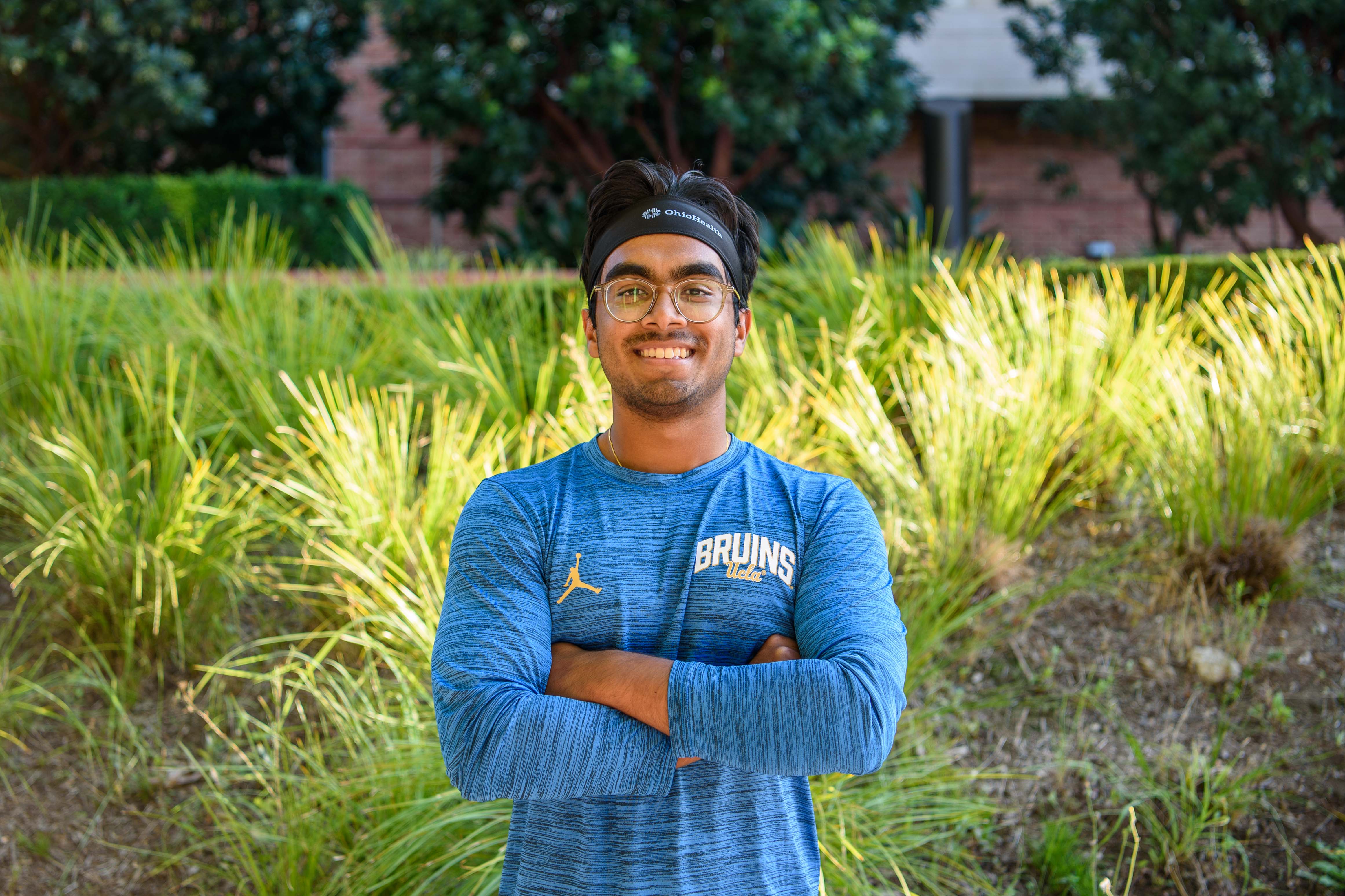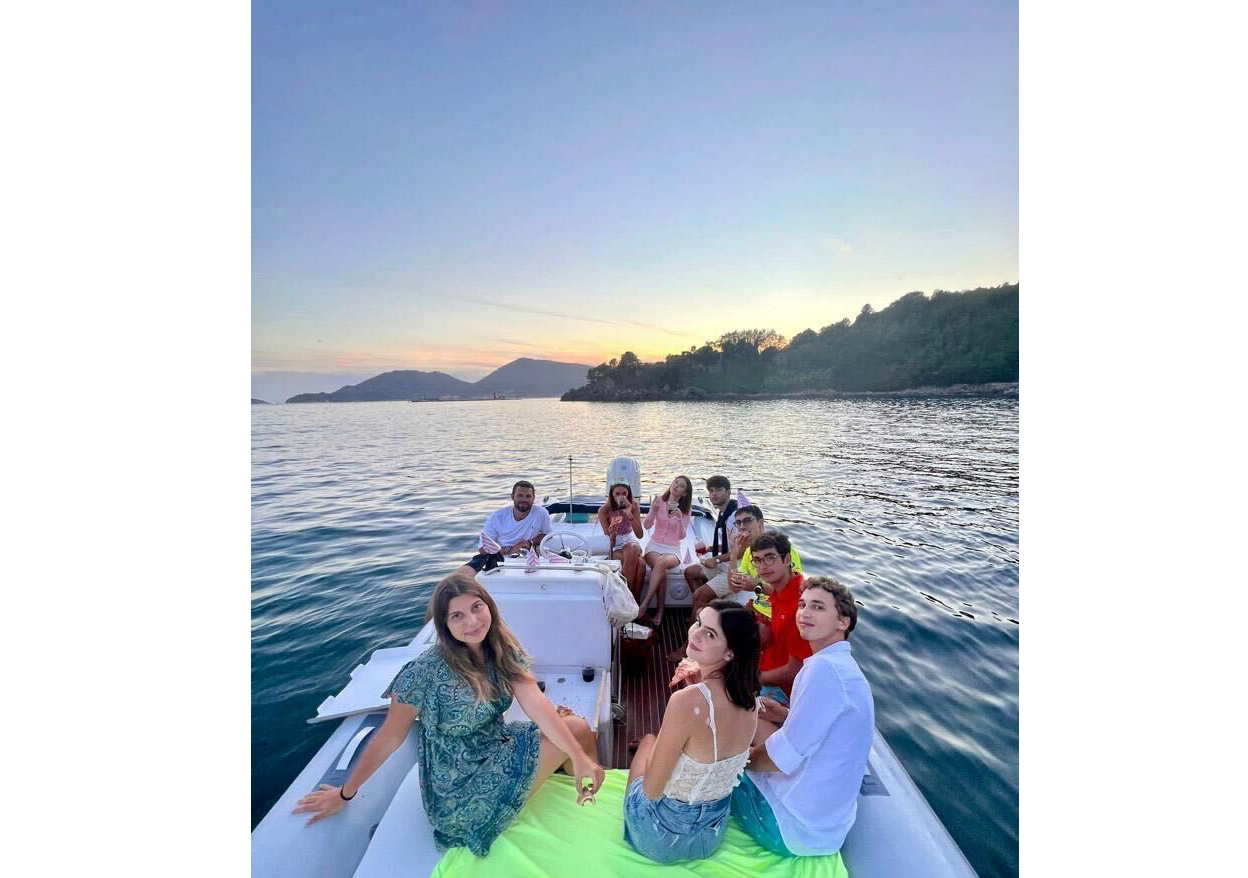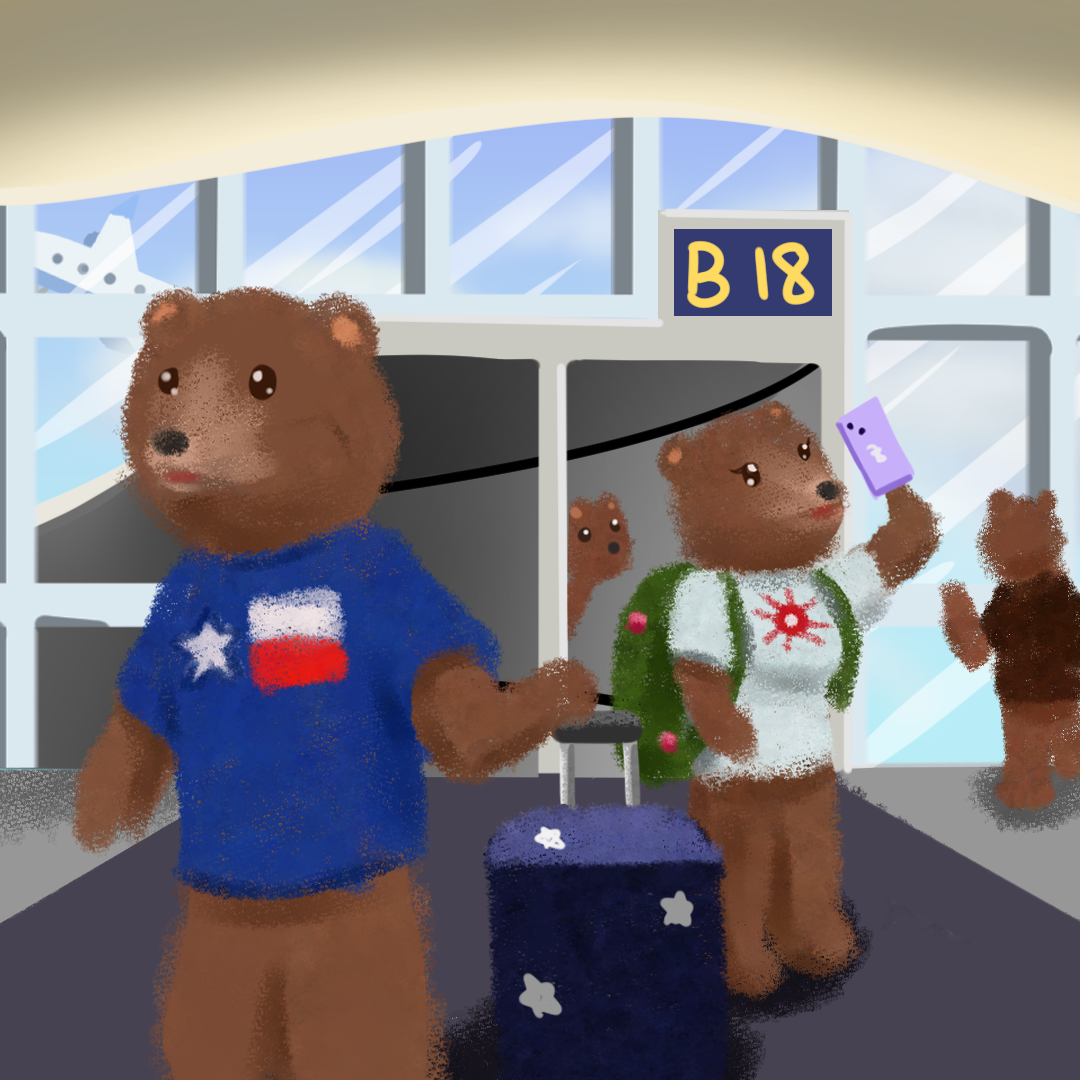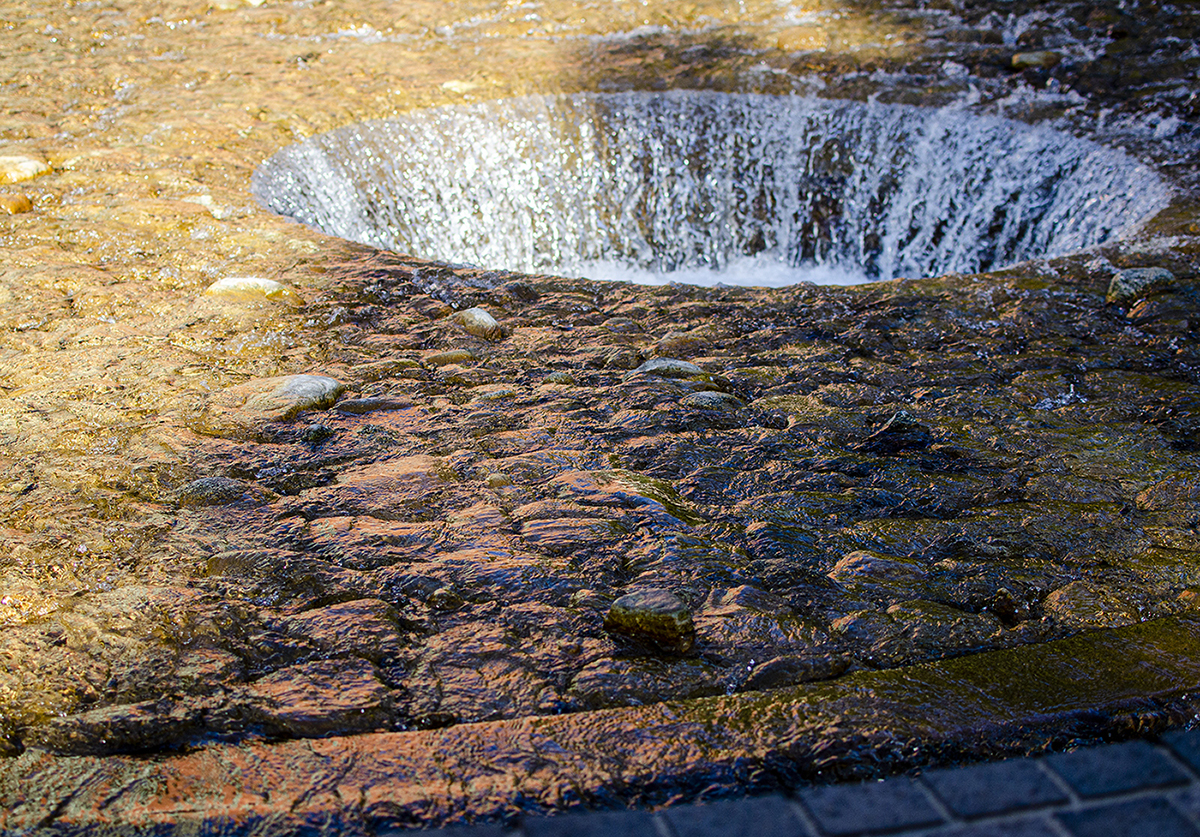Opinion: Finding the balance between self-improvement and self-discovery

Opinion columnist Russell Ahmed poses for a portrait in exercise gear. (Nicolas Greamo/Daily Bruin senior staff)
By Russell Ahmed
Oct. 19, 2023 8:41 p.m.
This post was updated Oct. 21 at 11:26 a.m.
The start of the pandemic marked the beginning of my infatuation with self-improvement. In late 2020, my brother and I started working out in our basement. He created a Google spreadsheet and dubbed it “Brovid-19” to track our progress – one set of BowFlex dumbbells was all we needed.
It was a simple “push, pull and legs” lifting plan, but it was enough to intensify my curiosity for physical wellness. With the help of our high school’s athletic trainer, coach Shelby Reichle, my senior year capstone project culminated in a curated athletic training plan. As a result, my 10-yard dash time and vertical leap improved drastically over the course of eight weeks.
After each lift or session of sprints, I felt like I was moving toward something. Each day in the gym or on the track instilled in me a strong sense of accomplishment. I began to chase this feeling relentlessly along with a growing number of people my age, who have been presented with a plethora of public figures in mainstream media who champion this mindset.
The rising prominence of self-help influencers such as David Goggins and popular science figures such as Andrew Huberman has led to a similar drive within their ever-expanding audiences, myself included. Goggins’ bestselling memoir “Can’t Hurt Me” emphasizes the potential of one’s mind and empowers readers to take control of their destiny, even when faced with dire circumstances.
Huberman’s “Huberman Lab” podcast focuses on educating its listeners about zero-cost, science-based habits – or “protocols,” as he dubs them – that can improve one’s productivity, fulfillment and overall health. Goggins’ mindset hinges on making tough sacrifices that others won’t, an understandable outlook from a man who came from humble beginnings to a career as an ultramarathoner and a Navy SEAL.
Slowly, I caught myself descending into this “optimization culture” promoted by these self-help influencers, experiencing both the pros and cons firsthand. But as I drifted asleep after a full day of lab work, exercise and classwork during UCLA’s first summer session, I started to question the value of this feeling of accomplishment.
I wondered whether it was worth the deficiency of social interaction and exploration, particularly during this unique period of my life: the transition from adolescence to young adulthood.
Jennifer Silvers, associate professor and endowed chair in developmental neuroscience at UCLA, is a leading expert in the formative nature of adolescence. I sought Silvers out to see if the tunneled, self-focused lifestyle I was cultivating for myself was detrimental to my growth as a person.
“The period of development between adolescence and young adulthood is a period where the experiences we have are going to be really important for shaping neural circuits,” Silvers said.
Neural circuitry is at the core of learning and memory for humans.
In essence, it is the “wiring” of our brain that controls the behaviors that define us. Most importantly, the neural circuitry in our brain is extremely receptive to reward during this period of development.
This, in turn, drives the desire to explore and take risks that often characterizes the years preceding young adulthood.
Upon learning this, it was clear to me that I was squandering the opportunity to grow by focusing my time and effort solely on my physical health and academic-related pursuits.
“It’s (adolescence) a time of tremendous opportunity to explore, discover passions, carve out your identity and try new things.” Silvers said. “It’s when people get to try on several versions of themselves and find out what fits.”
Our brains are primed to absorb these experiences and integrate them into our future lives accordingly.
I reflected on how I had been going about my life since the pandemic. Sure, I experimented with a few versions of myself during high school, but I’m still far from the end of my growth and development as a human. I had grown too comfortable with my hobbies because I knew they would provide me with a consistent feeling of accomplishment.
Going beyond my comfort zones of the library, the golf course or the gym was something I had ceased to do.
During the summer here at UCLA, I did not meet anyone new. Apart from one trip to a climbing gym, I did not try anything new. How can self-discovery occur under these conditions?
After turning 20 years old last month, I felt as though it was too late to capitalize on my brain’s propensity to integrate new experiences into my persona. Thankfully, this was far from the case.
Silvers said that it does not have to be an all-or-nothing choice between a cerebral, regimented daily routine or a sporadic one that involves spontaneity and prioritizes time with friends.
Not only is balance between the two attainable, but the choices we make about how we spend time with others lead to a stronger sense of self – and almost paradoxically, an even more productive version of yourself.
Consider a scenario that illustrates this phenomenon: you, alone, could run six miles at a 10-minute-per-mile pace. On the other hand, you could join your friend for six miles at a 12-minute-per-mile pace, one that is slower and more comfortable for you.
In effect, it is a decision between personal, anaerobic speed training versus aerobic activity coupled with a social benefit.
“I think there’s some validity to it (a compromise),” Silvers said. “Maybe it winds up meaning … you get one extra run in a week because it’s more motivating to do it with another person. And then you have one run where you go faster by yourself.”
In other words, it is possible to kill two birds with one stone.
In a discipline such as running, consistency trumps intensity. According to Silvers, this cost-benefit analysis can be found in many domains. However, striking this balance simultaneously promotes personal progress and social well-being in the long run.
Making connections with friends who will push you to be more consistent or to expand your perspectives beyond those you were raised to adopt is integral to the self-discovery that defines adolescence and young adulthood.
“It’s helpful to think about gathering a variety of types of experiences, but then also selecting the ones that we think are most important for promoting the person we want to become,” Silvers said.
There is no correct daily routine or philosophy that can accelerate this process. The individualistic teachings of Goggins or Huberman have significant value, but what we can accomplish together is far more powerful than what we can accomplish on our own.
It is the people who surround us paired with our unique passions, struggles and pain that catalyze the beautiful process of finding one’s self.





